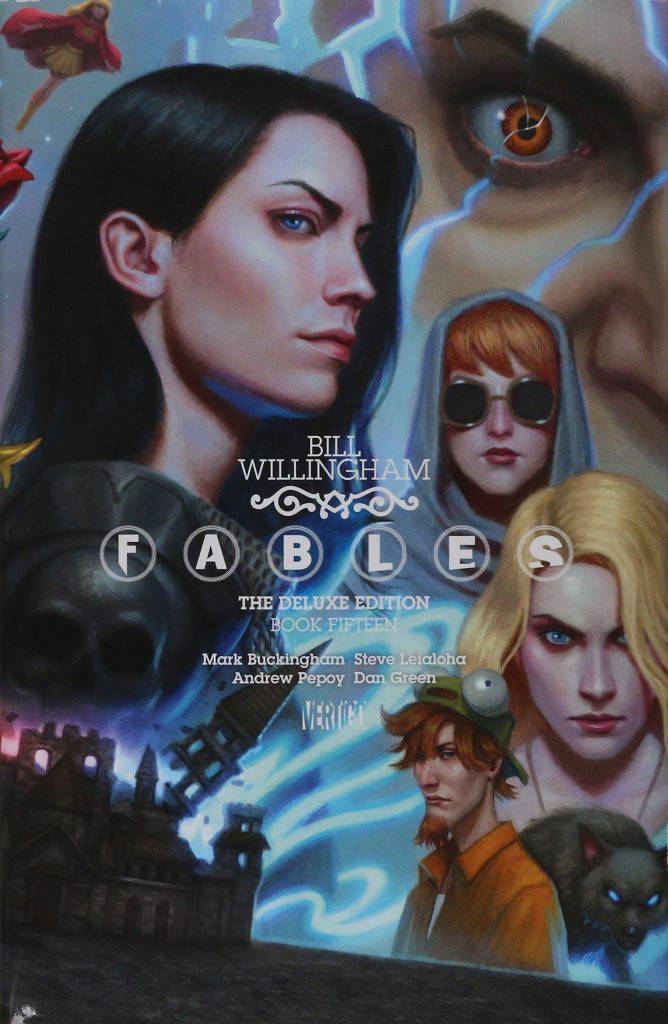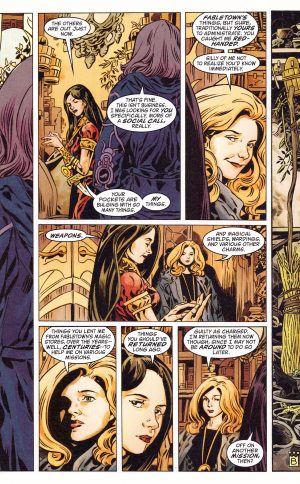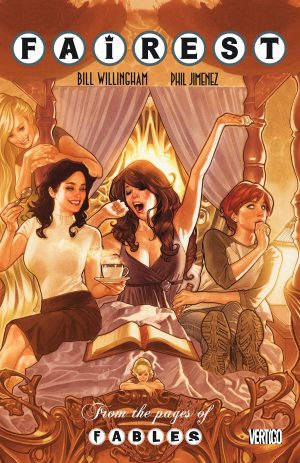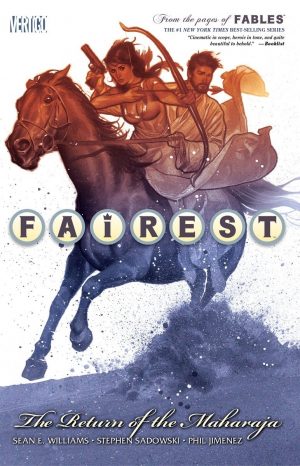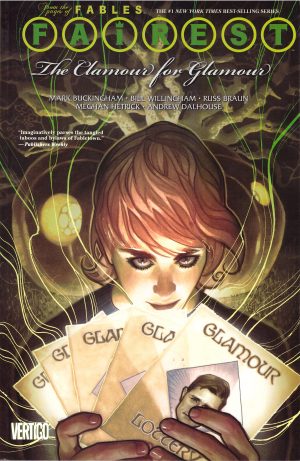Review by Frank Plowright
This deluxe hardcover edition of Fables pretty well splits down the middle as Bill Willingham and Mark Buckingham bring their long running series to a close. It’s not their best volume, but it is a crowd pleaser, and Willingham plays fair by winding up the stories of pretty well everyone from what’s grown to be an enormous cast. If they don’t feature in the main story, then they’re seen in one the many shorts, whose tone ranges from trivial to poignant according to the characters involved. It also provides an opportunity for many of the artists who’ve guested on the series to take a bow, and even introduces a few newcomers. That Neal Adams guy looks very promising.
In addition to the farewells, there are two substantial stories. The content of Book Fourteen began mentioning that a fatal conflict between Snow White and Rose Red was inevitable, which puzzled both, as they have their disagreements, but neither sees them escalating into conflict. There is manipulation involved, and one of the sisters is given a new view of the past that explains a lot and successfully instils a sense of foreboding when read. Although a lot is going on, as much as anything, what was originally collected as Happily Ever After is a prologue to the finale. What’s impressive is in the midst of wrapping up a long and complex saga involving numerous viewpoints Willingham still manages to drop bombshells, including one that will have you slapping your forehead and spluttering “doh!” Things are wrapped up, perhaps leaving the door a little open should Willingham decide he wants to dip his toes back in the water at a later date, with the central question being whether destiny is inevitable.
There’s perhaps a tendency to take Mark Buckingham’s brilliance for granted because he’s so prolific and so consistent. As has been the case since the Animal Farm sequence, his art is the very epitome of elegant, character-rich storytelling, and just how spectacular he can be is enshrined in a four page fold out section. This looks even better at the larger page size than when originally printed in Farewell. He’s also more innovative than you’d realise. Several chapters of the final long story are told almost entirely via long vertical panels. How many artists would ever attempt that? To pick on just one of his many talents, he’s superb at expressions. The sequence shown on the sample page has an undertone, and the way Buckingham draws it works both for what’s said at the time, and for what’s later revealed.
While some are gems, and every reader surely wants the story of their favourite character neatly tied up, the one to three page shorts don’t match the thrills of the longer stories as they largely lack tension.
Willingham supplies an introduction updating what was originally printed in Farewell, offering some thoughts on Fables and its reception. It’s a cherry on the cake of what’s a fine conclusion that shouldn’t disappoint anyone while it continues to supply shock and awe. This content is also found in Fables Compendium Four. This was to have been the end for Fables, but after a gap of seven years we were given Book Sixteen.
